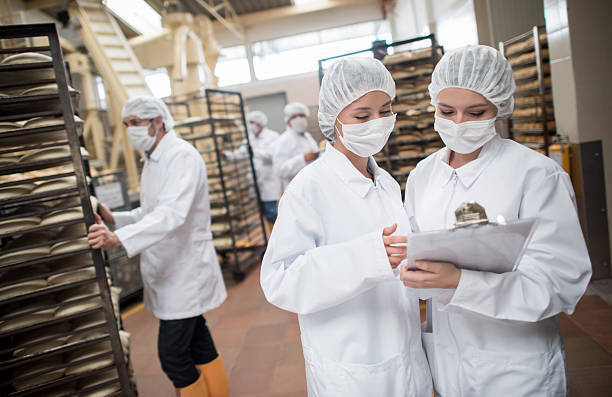Food hygiene measures in a restaurant

Women working at a food factory and looking at checklist on a clipboard
Food hygiene measures in a restaurant
What is food hygiene
We could define it as the set of rules, guidelines, and procedures that companies, in this case, restaurants, must follow to ensure the safety and suitability of food. The aim is to preserve the health of the consumer by respecting these principles at all stages of the food chain.

What food hygiene guidelines should a restaurant follow?
To ensure that the food we serve in a restaurant is free of dangerous microorganisms that could cause discomfort or illness to the consumer, we must apply guidelines based on these basic lines of action:
- Reception and storage.
- Food handling and preparation.
- Personal hygiene.
- Maintenance of facilities and equipment.
- Pest control.
We explain them below:
-
Reception and storage.
During the reception,t is necessary to verify that the merchandise is in perfect condition and that we can store the food safe
- Swollen, rusted, dented, or crushed cans will be discarded.
- On suspicion that the taste, color, or smell of a product or raw material has changed, it is discarded.
- We must separate cooked food from raw food and place it in refrigeration or freezing chambers if needed immediately.
-
Food handling and preparation.
- If a product has already been thawed, it cannot be frozen again unless the food has been completely cooked and a new freezing can be carried out.
- To avoid cross-contamination, the cutting boards for raw and cooked foods must be different and preferably made of food plastic, instead of wood. Boards should be washed and rinsed after use.
- Wash the fruits, vegetables, and vegetables and even more if they are going to be eaten raw.
- With reheating food, avoid doing it more than once.
- It is essential to respect food storage temperatures so that they do not exceed the so-called “danger zone” and spoil or lose their safety. According to the WHO (World Health Organization) that zone is between 5°C and 60°C when microorganisms multiply more rapidly. Remember that refrigeration between approximately 0ºC and 8ºC and freezing below 18ºC slows down or prevents this growth as long as it is carried out properly and respecting the cold chain.
- Thoroughly cook food to ensure that microorganisms disappear. It is recommended to reach 70°C so that its safety is guaranteed and control thermometers are very useful in this task.
-
Personal hygiene.
- Those in charge of preparing meals, mainly chefs and kitchen helpers, must wash their hands frequently before handling any food. These hand cleaning and disinfection guidelines in agri-food companies will help you.
- It is essential that the restaurant team have training in hygiene and food safety to avoid mistakes. Ask us as a center with authorization to teach courses in this area throughout Australia.
-
Maintenance of facilities and equipment.
- The kitchen should always remain clean and airy.
- Kitchen utensils must be washed with soap and water after use.
- We will carry out the cleaning and disinfection of household items, machinery, and, ultimately, all kitchen equipment (fryers, microwaves, ovens, freezers, and cold rooms…).
-
Pest control.
- Protecting food preparation areas against pests and implementing prevention systems is another requirement.
- Relying on professional disinfection, disinsection, and deratization service will also be very important.
Hygiene of the most common foods in a restaurant
Next, we find more specific indications about the most common foods in a restaurant:
- Leafy vegetables. Damaged and dirtier leaves must be removed and washed thoroughly with potable water and suitable products can disinfect them.
- Soups and stews. We must make sure that they reach 70ºC for cooking.
- Eggs. They must be placed in a refrigerator at a temperature of 5ºC or less and cooked at 63ºC unless otherwise shown magento development company chicago. Use pasteurized eggs instead of raw ones if you will not cook them at the shower temperature.
- Fish. If it is fresh, the eyes should be clean, the gills and the flesh firm.
- Meat. For chicken and red meat, the juices should be light.
How many of these food hygiene guidelines that a restaurant must comply with do you already put into practice? Contact us now so we can start working for the security of your business.



